One of the major pains of the last few years has been the lack of any colored prescription contact lenses for people who have astigmatism. When FreshLook Colorblends Toric was discontinued by Alcon, it created a big hole in the market for all those who want to wear color contact lenses but don’t have perfectly spherical prescriptions.
In this article, I will discuss how it is possible for your eye doctor to use something called the spherical equivalent of your prescription so that even if you have a small amount of astigmatism, you might still be able to order prescription colored contact lenses.

What is Spherical Equivalent?
When you receive a prescription for glasses, you can have numbers in any of the following 3 categories: ‘Sphere’, ‘Cylinder’, and ‘Axis’.
When there are only numbers in the ‘Sphere’ category, there is no astigmatism. For contact lens wearers, this gives you the most options. You will have no problems getting prescription colored contacts.
When you have numbers in all 3 categories, ‘Sphere’. ‘Cylinder’, and ‘Axis’, it means that you have some level of astigmatism. This will often require you to order contact lenses for astigmatism, but unfortunately for color contact lens wearers, color contact lenses for astigmatism are have become very difficult to find.
That’s where the spherical equivalent comes in. Calculating the spherical equivalent of your prescription condenses your prescription for astigmatism, which has ‘Sphere’, ‘Cylinder’ and ‘Axis’, into a single ‘Sphere’ number. Doing this can allow some people with astigmatism to order brands of contact lenses that they otherwise would not be able to.
The trade off however, is that vision through the spherical equivalent prescription will not be as clear as the prescription for astigmatism. Keep that in mind when you and your eye doctor are deciding if this is the right option for you. The higher the ‘Cylinder’ number is in your original prescription, the worse the vision will be through the spherical equivalent prescription.
How The Spherical Equivalent is Calculated
This is a simplified overview of how the spherical equivalent is calculated.
Note that only your eye doctor or a prescribing optician is qualified to prescribe you contact lenses.
The axis is removed
- The axis is not part of the calculation for spherical equivalent at all. It completely disappears.
The cylinder is divided by 2
- The Cylinder power is power in your lens that is only present in one direction. In other words, it is only present in half the lens. When attempting to combine the cylinder with the Sphere, your doctor must take this into account by only taking half of the Cylinder.
- Because Cylinder powers only come in steps of -0.25, it is possible that when it is divided by 2, that the number does not end in a multiple of -0.25. That is where your eye doctor’s professional judgement comes into play to decide which closest multiple of -0.25 will be the most appropriate for you based on many different considerations.
The sphere and the 1/2 cylinder are combined
- The Sphere and the Cylinder are then added together to give you the ‘Equivalent Sphere’.
The above process will give your eye doctor a theoretical starting point for you to try contact lenses with. This does not always produce the best results, hence your eye doctor will measure your vision with the Spherical Equivalent that he/she calculated, and make additional adjustments as needed.
Examples
Below is a demonstration of what calculating the Spherical Equivalent does. It takes prescriptions with ‘Sphere’, ‘Cylinder’ and ‘Axis’ numbers and produces a single number that is the closest to the combination of all 3 numbers.
Example 1: Glasses Prescription:
Theoretical Spherical Equivalent:
|
Example 2: Glasses Prescription:
Theoretical Spherical Equivalent:
|
Example 3: Glasses Prescription:
Theoretical Spherical Equivalent:
|
Calculating Things Isn’t Your Strong Suit?
No problem! If you want to quickly look up the spherical equivalent of any ‘Sphere’ and ‘Cylinder’ combination, you can do so right here at Contacts Advice. Simply find the chart that contains the numbers you’re looking for, and you’ll instantly see the Spherical Equivalent.
Remember that calculating or looking up the spherical equivalent of your prescription is not a substitute for being prescribed contact lenses by your eye doctor. Contact lenses should not be ordered with anything other than a valid contact lens prescription written by your optometrist.
==> Click Here to Access Contacts Advice’s Spherical Equivalent Charts <==
Other Uses of Spherical Equivalent
Calculating the spherical equivalent has many practical uses. Eye doctors are skilled at performing these calculations for many different things, including:
1. Order spherical contact lenses for you
- Whether its for color contact lenses or clear ones, contact lenses for astigmatism are more expensive and can create fluctuations in vision if the contact lenses are not stable on your eyes. If you have a small amount of astigmatism, your eye doctor may take the spherical equivalent of prescription to order you regular (spherical) contact lenses.
2. If your ‘Cylinder’ number is too high for contact lenses
- In this case, your doctor would not be taking the true spherical equivalent, he/she you would be applying the same principles in order to drop your ‘Cylinder’ number down to the highest available ‘Cylinder’ power for contact lenses for astigmatism. I.e, if your cylinder is -3.25 but your doctor wants to put you in a contact lens that has a maximum cylinder correction of -2.75, he/she will have to apply the principles of the spherical equivalent in order to do so.
3. To help you adjust to your new glasses prescription
- If your eye doctor detects a large change in your cylinder, it is not uncommon for them to reduce the cylinder using the principles of the spherical equivalent in order to help you adjust to your new glasses. New glasses containing a large change in cylinder can cause symptoms of eyestrain, dizziness and headaches.
When Not To Use Spherical Equivalent
Remember that the higher your ‘Cylinder’ number is in the original prescription, the worse your vision will be through the Spherical Equivalent.
Generally speaking, if your ‘Cylinder’ is higher than -1.00, your eye doctor will most likely advise against using the Spherical Equivalent to order contact lenses, as the vision will be too greatly affected. Also remember that using your spherical equivalent with any amount of ‘Cylinder’ in your glasses prescription will result in some amount of blurriness. If you’re that person who cannot tolerate any blur in his/her vision, do not allow your Spherical Equivalent to be used for your contact lenses. You will not be happy with the outcome.
If you have astigmatism and you’re interested in ordering color contact lenses, speak with your eye doctor about what he/she can do with the numbers in your prescription in order to help you out.
Using A Contact Lens Prescription Online
Once an eye doctor has issued you a valid contact lens prescription, you can then use it to order contact lenses in stores or online. Depending on the website you chose to buy your contact lenses from, you may or may not have to provide the website with your prescription (depending on the regulations governing the site).
Regardless of whether you have to provide your contact lens prescription or not, it is always extremely important to only use a valid contact lens prescription to order contact lenses.
Disclosure: Contacts Advice receives compensation from VisionDirect.co.uk for referring customers to them. We chose to feature VisionDirect.co.uk because of their reliable reputation and highly rated reviews. Thank you for your support.
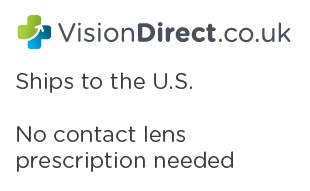
Where Can You Order Contact Lenses Without a Prescription?U.S. law requires U.S. based websites to verify that you are using a valid prescription to order your contact lenses. Other countries don’t have the same laws and can sell contact lenses without verifying the prescription. VisionDirect.co.uk is a contact lens website based in the United Kingdom that specializes in serving the U.S market. ==> Click Here To Order From VisionDirect.co.uk Without A Prescription <== |
*Note* I am not a doctor and this is not medical advice. I do not condone ordering contact lenses without a prescription. Please make sure you have been advised by your doctor before using any contact lenses.
*Note* I am not a legal expert and this is not legal advice. Please make sure you are familiar with the laws in your area regarding ordering contact lenses online with/without a prescription.

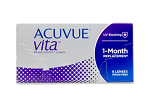

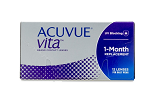

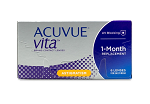
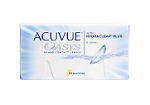
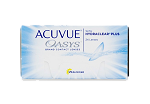
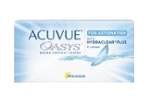

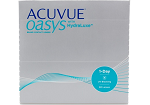


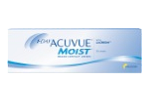
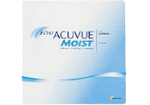

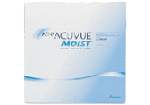
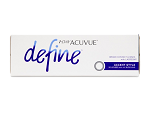
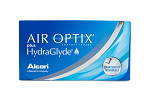
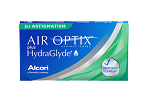

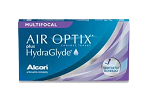
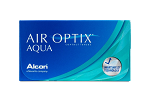
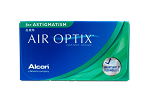
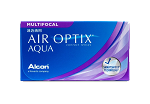
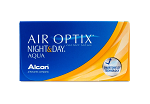
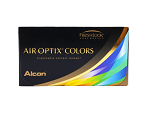

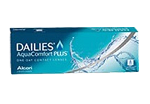


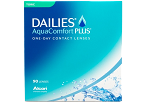

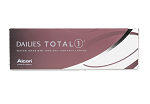

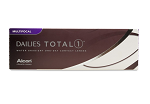


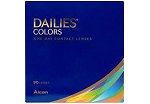
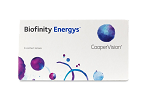
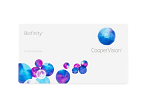

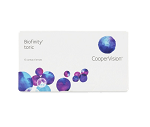
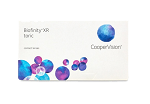


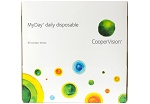
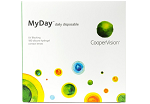
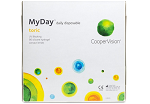

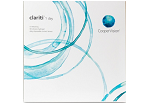
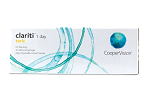
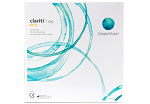
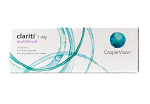
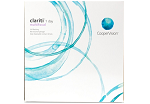
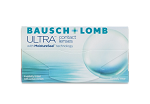

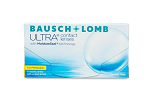
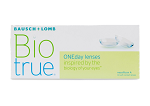
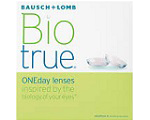

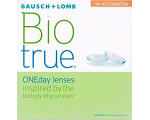
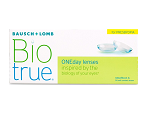




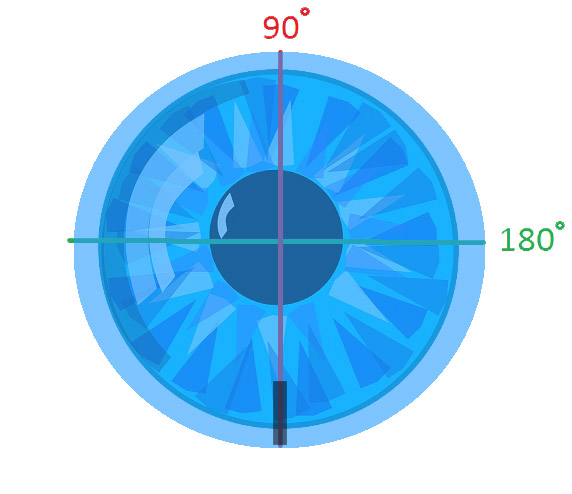
17 Responses
Julie
Hi Kitty, with your numbers it may be possible, but because you have astigmatism, your vision will not be especially clear with the spherical equivalent. Your eye doctor can help work it out with you and try to find the numbers that will give you the best vision possible.
This information is provided as an information resource only (i.e., not medical advice) and is not to be used or relied on for any diagnostic or treatment purposes. This information does not create any patient-doctor relationship, and should not be used as a substitute for professional diagnosis and treatment.
Amy
I used to do this so that I could wear colored contact lenses and I have a quite severe astigmatism (-1.25 for my left eye and -1.75 for the right eye). I can confirm that my vision was not clear, but it was enough to pass the day. I could not see the face of someone I knew from 5 meters away, and I had to always move nearer to read some texts in the airport or train station, which is pretty important. And that’s when I decided to ditch the color and get back my vision clarity, it actually felt so much better wearing lenses with astigmatism.
Julie
Hi Amy, thanks for your sharing your personal experience with this. People who have astigmatism and want to wear color contact lenses are in a tough situation these days. There isn’t an ideal solution. Either they have to do what you did and take the spherical equivalent of their prescription which can make vision blurry, or they have to order color contact lenses for astigmatism from overseas because there are no longer any color contact lenses for astigmatism readily sold in North America. For a list of brands that you can order overseas, see this article.
Either way, it is important to consult with your eye doctor to get his/her approval before using any kind of contact lenses.
This information is provided as an information resource only (i.e., not medical advice) and is not to be used or relied on for any diagnostic or treatment purposes. This information does not create any patient-doctor relationship, and should not be used as a substitute for professional diagnosis and treatment.
Jessica
Such a great article! I looked all over for this info. I have worn colored contacts for years and when I could not get toric ones, my doctor prescribed a higher prescription contact that worked well for driving. I had to wear glasses to read close-up (along with the contacts). That has worked pretty well, though it is not ideal.
I thought (but could be wrong) that my doc used my CONTACT prescription and added half of the Cylinder (1.75 R and 1.25 L) to obtain the non-toric contact prescription, rather than my EYEGLASS prescription. Which is the best to use, since the eyeglass prescription is generally already stronger?
Julie
Hi Jessica, that’s a great, and very insightful question! In my experience, I would say that which prescription you use (whether glasses or contact lenses) to calculate the equivalent sphere is secondary to the trial and error process (led by your eye doctor) that follows when evaluating the performance of the contact lenses on the patients’ eyes.
For lower prescriptions, the difference between taking the spherical equivalent of the glasses or contact lens prescription is so small it’s negligible, and for higher prescriptions where there is a significant difference between the glasses and contact lens numbers, a final contact lens prescription would not be released without undergoing a trial and error process anyway.
When we are considering the equivalent sphere for prescriptions with upwards of -1.00 Cylinder, you’re getting into rather unpredictable territory. A lot of the time you simply won’t know which power works the best until you’ve tried it.
For example, when you’re taking the equivalent sphere of a prescription with a cylinder of -1.75, you’re stuck having to choose between two options that are not the exact spherical equivalent. Why? Because half of -1.75 is -0.875 which is not available in contact lenses. So you’re stuck having to choose between adding -0.75 or -1.00 to the sphere. The only way to know which will work best for the patient is to try them both out and for the eye doctor to assess each of them.
Also, for many contact lens brands for prescriptions stronger than -6.00, they are only available in steps of -0.50 (i.e., -6.00, -6.50, -7.00, etc.). So if your equivalent sphere calculation gives you a result that ends with -0.25 or -0.75, you have no choice but to try on the 2 closest options and see which one works best.
So again, in my opinion, which prescription you use is not as important as your eye doctor having you try them on and refining the power based on the vision with the contacts and what parameters are available. In most cases, whether your eye doctor uses the glasses or contacts to calculate the spherical equivalent, the result is very similar anyway.
Hope that helped :)
This information is provided as an information resource only (i.e., not medical advice) and is not to be used or relied on for any diagnostic or treatment purposes. This information does not create any patient-doctor relationship, and should not be used as a substitute for professional diagnosis and treatment.
Jessica
Thank you. I looked again and he did choose one that is between the glasses and contact prescriptions.
The other part of the inexact equation is what power reading glasses to use to compensate for the astigmatism. The stronger the lenses, the less power the glasses need, of course. It has worked out well for a while, but nothing beats the vision from toric lenses (though the larger, thicker lenses bother my eyes much more).
Julie
Hi Jeanine, that’s a tough one! Looking through the spherical equivalent of numbers like that will definitely cause some blur. If you’re wearing the exact prescription for your right eye, and you have a good tolerance for blurriness, you may be able to get by. However, if you’re very particular about seeing as well as possible and any amount of blurriness in your vision bothers you, you will not like it. That’s my opinion, but I suggest you speak with your doctor and see what he/she thinks :)
This information is provided as an information resource only (i.e., not medical advice) and is not to be used or relied on for any diagnostic or treatment purposes. This information does not create any patient-doctor relationship, and should not be used as a substitute for professional diagnosis and treatment.
Julie
Hi Stan, it seems from your question that you may be planning to order contacts using your spherical equivalent? Please understand that this article and this comment isn’t intended to be taken a medical advice. Optometrists almost never prescribe the spherical equivalent for prescriptions with cylinders stronger than -1.00. That’s because, at that point, it isn’t really helpful as it would barely make any difference in your vision. I would exercise caution in whatever you do and get the guidance of an eye care professional :)
Always order contact lenses using a valid contact lens prescription.
This information is provided as an information resource only (i.e., not medical advice) and is not to be used or relied on for any diagnostic or treatment purposes. This information does not create any patient-doctor relationship, and should not be used as a substitute for professional diagnosis and treatment.
Vinodh
Hi,
My readings are :
Left eye : SPH : -5.75, CYL : -1.50, Axis : 180
Right eye : SPH : -5.75, CYL : -1.50, Axis : 165
Conversion in Spherical = -6.50
I want to make for swimming goggles which comes only in Spherical.
Thank You.
Julie
Hi Vinodh,
Whatever it is you buy, I advise you to do so using a valid eye doctor issued prescription.
Swimming is an activity that for most people, doesn’t necessarily require perfect vision. If you are willing to accept a bit of blurriness in your swimming goggles, then it might work for you but check with your eye doctor first.
Also be aware that even if you could get your exact prescription in swimming goggles, the vision in swimming goggles is not exactly the same as with regular glasses. Although the vision will certainly be better than not wearing anything at all, you may still experience some distortions due to the shape of the lenses.
This information is provided as an information resource only (i.e., not medical advice) and is not to be used or relied on for any diagnostic or treatment purposes. This information does not create any patient-doctor relationship, and should not be used as a substitute for professional diagnosis and treatment.
Whitney
Maybe you can help me. My sphere is 0. It says ‘plano’ in the box. But my cylinder is -1.75 for each eye.
RT: SPH: Plano, CYL: -1.75, Axis: 100
LT: SPH: Plano, CYL: -1.75, Axis: 70
I’ve been searching everywhere to see what this really means. Does it mean I’d have 20/20 if it weren’t for my astigmatism? And because my SPH is 0, how would the equivalent work for me? How blurry would it be?
Julie
Hi Whitney, thanks for the great questions!
Your numbers represent astigmatism, specifically, ‘simple myopic astigmatism’. What this means is that indeed, as you have said, your astigmatism is the only reason why you need glasses/contacts, and was it not for that astigmatism, you would have perfect vision (assuming you don’t have any other eye-health conditions).
The spherical equivalent of your numbers would be calculated like this:
SE = S + [ 1/2 * C ]
R: 0 + [ 1/2 * -1.75 ]
L: 0 + [ 1/2 * -1.75 ]
If you were to compare the vision between…
SPH: 0 CYL: -1.75
And
Sph: -0.875 CYL: 0
… there would be a significant difference and it wouldn’t be very clear with the spherical equivalent.
This information is provided as an information resource only (i.e., not medical advice) and is not to be used or relied on for any diagnostic or treatment purposes. This information does not create any patient-doctor relationship, and should not be used as a substitute for professional diagnosis and treatment.
Julie
Hello Kristen,
Your contact lens prescription will depend on many things. I cannot give you a contact lens prescription, but I can certainly comment on what the spherical equivalent of the numbers you presented would be.
A spherical equivalent is basically a single ‘Sphere’ number that would most closely resemble any ‘Sphere’, ‘Cylinder’, and ‘Axis’ ensemble.
The spherical equivalent is calculated by dividing the ‘Cylinder’ by 2, and adding it to the ‘Sphere’ (paying very careful attention to the positive and negative signs of course). The Axis is not part of the calculation. It is just completely dropped.
Sphere: -3.00 Cylinder: -0.75 Axis: 96
Spherical Equivalent: -3.00 + (-0.75 / 2) = -3.00 + [-0.375] = -3.375
Sphere: -2.50 Cylinder: -1.00 Axis: 70
Spherical Equivalent: -2.50 + (-1.00 / 2) = -2.50 + [-0.50] = -3.00
Your final contact lens prescription will be given to you by your eye doctor and is more than just the spherical equivalent of your glasses prescription.
I am not a doctor and this should not be considered medical advice.
Julie
Hello again Kristen!
Yes, you did a great job calculating the spherical equivalent of your glasses prescription!
To answer your question here, when numbers on glasses prescriptions (or their spherical equivalent) are lower (less negative) than -4.00, then they are not affected by the vertex difference that exists between glasses and contact lenses, meaning that they are not adjusted for this reason.
For many people, when the numbers on their glasses prescription show only ‘Sphere’ (no ‘Cylinder’ and ‘Axis’) and are less than -4.00, the numbers on their glasses and contact lens prescriptions are the same. This is not always the case, but there is no reason to assume that it wouldn’t be the case prior to a trial run and an assessment of the vision, comfort, etc.
Again, I am not a doctor. I am not prescribing you contact lenses or providing you with a substitute for professional medical advice.
Hope that answers your question :)
Rhia
My usual contact prescription has a cylinder of -1.5 but now both the online sites I typically order contacts from only seem to have -1.25 and -1.75 offered. Why is this?
Julie
Hi Rhia,
What contact lenses did you wear that had a cylinder of -1.50?
You’re only seeing those options because there is a convention among the major manufacturers of contact lenses for astigmatism where they are only made with certain Cylinder powers. They are -0.75, -1.25, -1.75, -2.25 and some brands have -2.75.
If my memory serves me right, the brand Focus Dailies Toric use to have a -1.50 Cylinder option, but it is discontinued now.
This information is provided as an information resource only (i.e., not medical advice) and is not to be used or relied on for any diagnostic or treatment purposes. This information does not create any patient-doctor relationship, and should not be used as a substitute for professional diagnosis and treatment.
Cindy Alam,
Do you know why they no longer make colored toric lenses? There must be some reason other than no market! I have worn colored torics for over 30 years and was always pleased with the fit, look and feel. I originally used a yearly lenses then when they discontinued that one I switched to Freshlook colored torics and was pleased it also. The colors were not as pretty as I had previously, but okay. I am now using AirOptics Torics and my eye doctor said that the rep tells her repeatedly they will be releasing a colored toric lense soon. My eye doctor told me today that they have been telling her that for about 3 years! I don’t believe that there is not a market here in the US because on Youtube there are many people looking for options overseas. I tried custom made lenses but was not satisfied with the fit and they cost $500. I email AirOptics every few months asking to no avail!